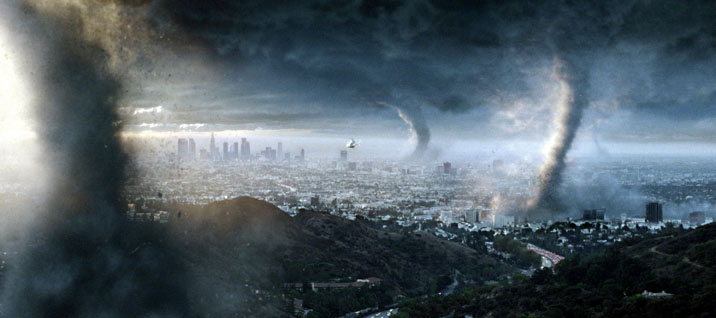The Intergovernmental Panel on Climate Change (IPCC), a United Nations geographically-chosen group of climate researchers, is the most high-profile science body in the world. Publicly they state that short-term weather events not be linked to climate change, since if every heat wave is called proof of global warming, every snowstorm will be called proof against it.
Despite UN cautions, numerous papers still link short-term weather events to climate change. In Climate Dynamics,
Florida State University geography professor
James Elsner and colleagues write that they have proved that climate change has changed the strength and frequency of tornadoes hitting the United States. In a statement about the work, Elsner writes that though tornadoes are forming fewer days per year, they are forming at a greater density and strength than ever before - instead of one or two forming on a given day in an area, there might be three or four occurring.
They are contrarians on this issue. Climate experts have dismissed the impact of climate change on tornadoes because there was no distinct pattern in the number of tornado days per year. In 1971, there were 187 tornado days, but in 2013 there were only 79 days with tornadoes. He says a deeper dive into the data showed more severity in the types of storms and that more were happening on a given day than in previous years.

Not extratropical cyclones. And not Chicago. Credit: Chiclones And Bombogenesis
"I think it's important for forecasters and the public to know this," Elsner said. "It's a matter of making sure the public is aware that if there is a higher risk of a storm, there may actually be multiple storms in a day."
The United States has always experienced more tornadoes than any other country. There have been numerous advances in technology and warning systems but they still remain a hazard to residents in storm-prone areas. The 2011 tornado season, for example, had nearly 1,700 storms and killed more than 550 people. In 2014, there have only been 189 storms with a death toll of 43, according to the NOAA/National Weather Service Storm Prediction Center. Such wide variation is common so controlling for variables is very difficult.
One bright spot of news in the research, Elsner added, was that the geographic areas impacted most regularly by tornadoes do not appear to be growing.






Comments